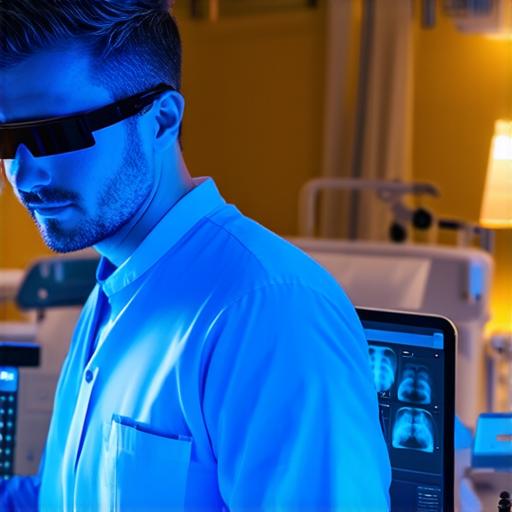
Surgical Procedures
One of the most promising uses for AR in healthcare is in surgical procedures. AR technology allows surgeons to view 3D models of a patient’s anatomy, making it easier to plan and execute complex surgeries with greater precision. With the help of AR glasses or headsets, surgeons can visualize the location of key organs and structures, reducing the risk of complications and improving outcomes.
In addition, AR technology can also be used during surgery to provide real-time feedback to the surgical team. For example, if a surgeon needs to adjust the position of a tool or implant, AR can overlay digital markers onto the surgical site, allowing the team to see exactly where they need to make adjustments. This can help reduce the risk of errors and improve the overall efficiency of the surgical process.
Training and Education
Another way in which AR can be implemented in healthcare is through training and education. By using AR technology, medical students and trainees can gain a more immersive and interactive learning experience. For example, AR can be used to create virtual simulations of surgical procedures, allowing students to practice their skills in a safe and controlled environment.
AR can also be used to provide real-time feedback to trainers, helping them identify areas where students may need additional training or support. This can help ensure that medical professionals are fully prepared to perform their jobs safely and effectively.
Patient Care
In addition to surgery and training, AR can also be used in patient care. For example, AR technology can be used to provide patients with real-time feedback on their movements and posture, helping them recover from injuries or surgeries more quickly.
AR can also be used to create virtual reality environments that help patients manage pain and anxiety during medical procedures. By providing a distraction from the procedure, AR can help reduce the patient’s stress levels and improve their overall comfort.
Summary
In conclusion, augmented reality has the potential to transform healthcare delivery in many ways. From surgery to training and patient care, AR technology can help make medical procedures more accurate, efficient, and effective. As AR technology continues to evolve, we can expect to see even more innovative uses of this exciting technology in healthcare in the future.
